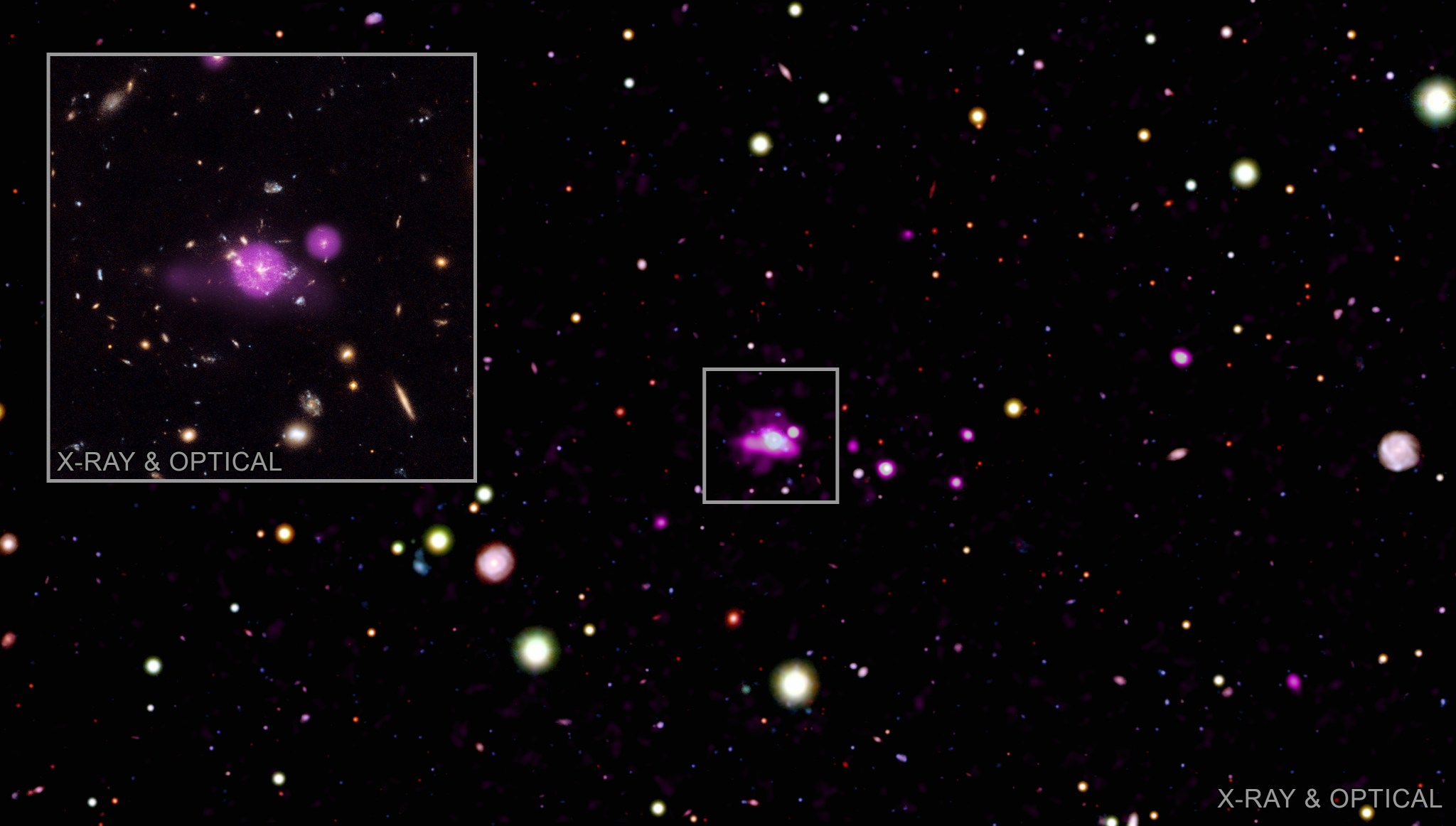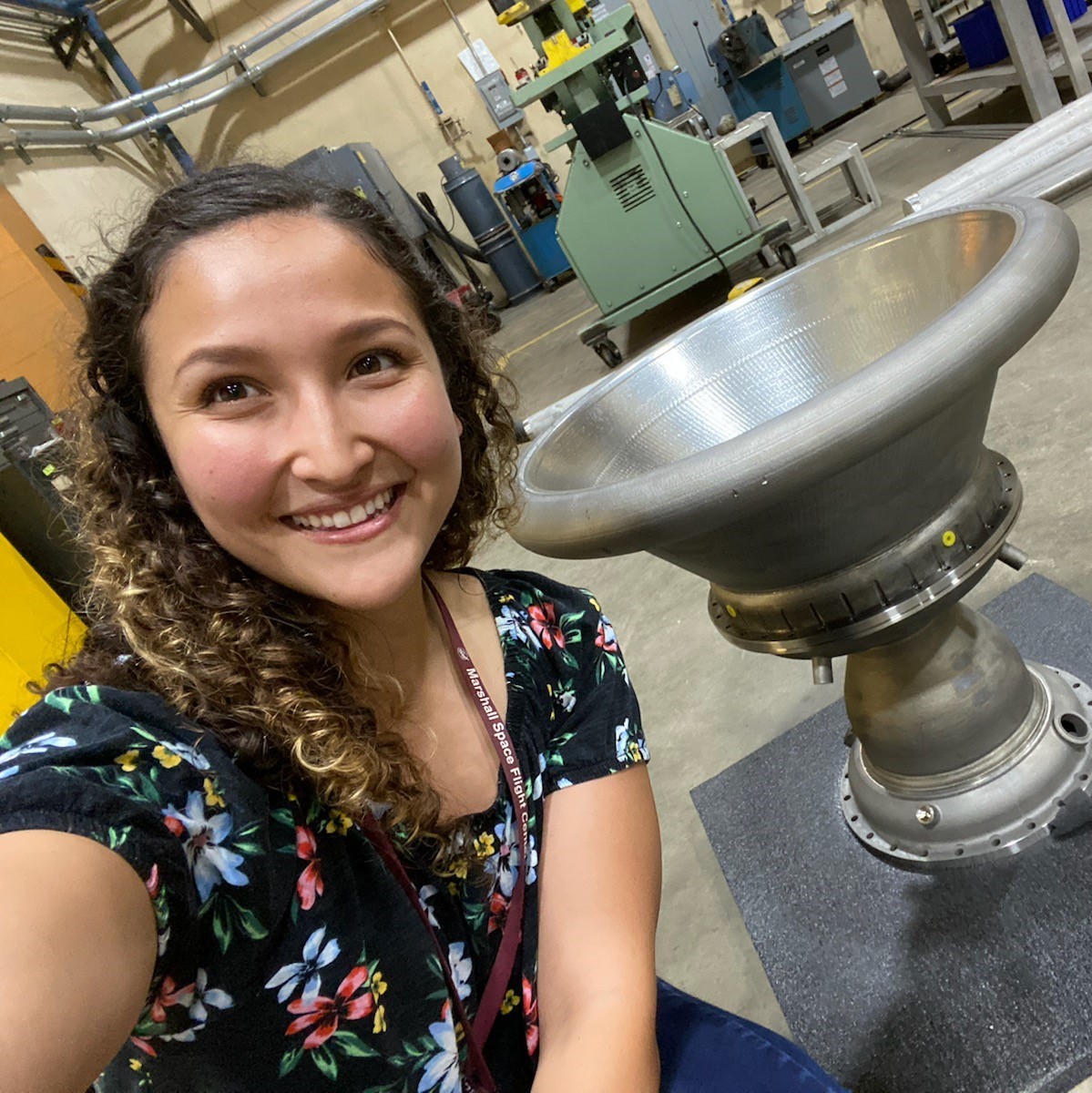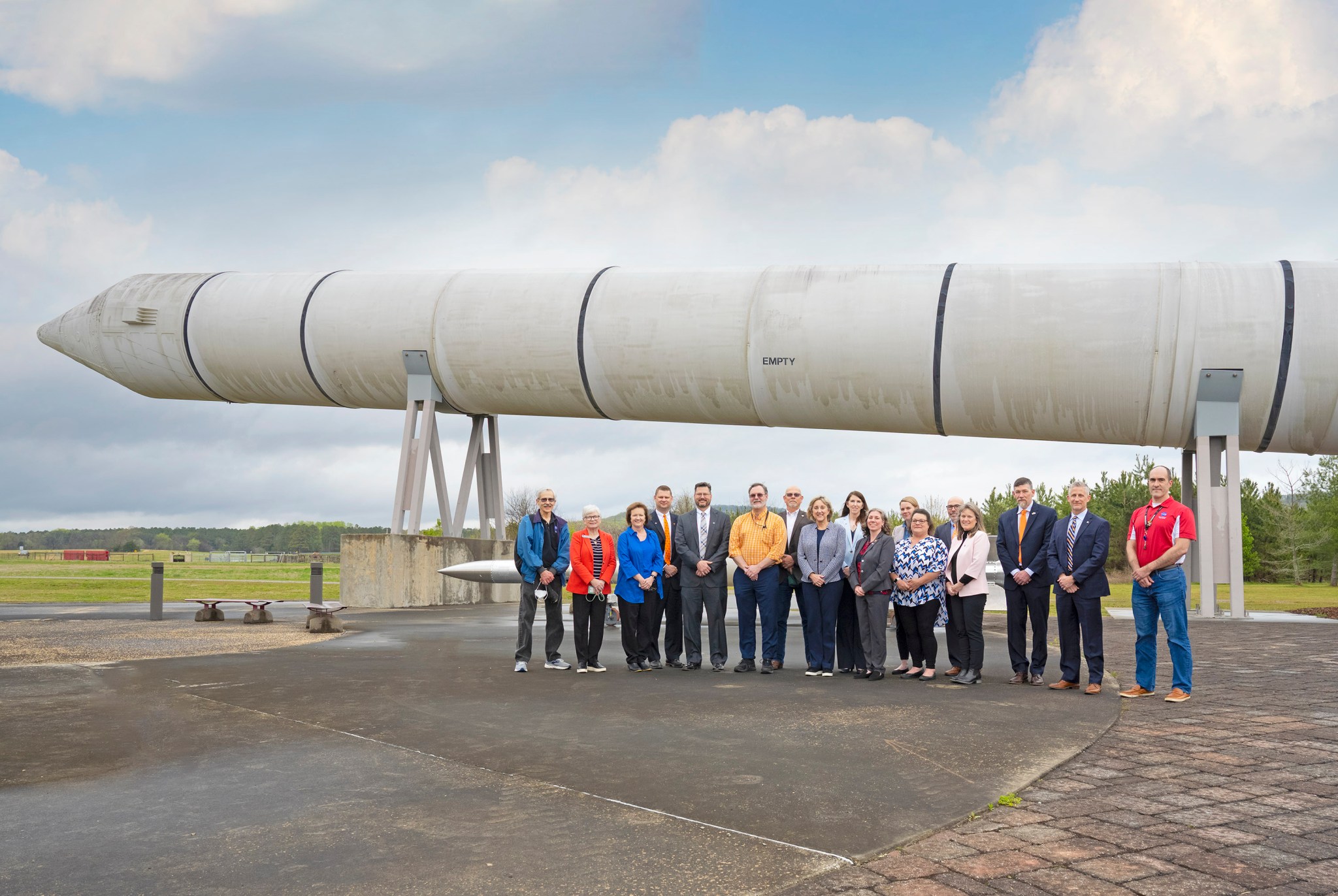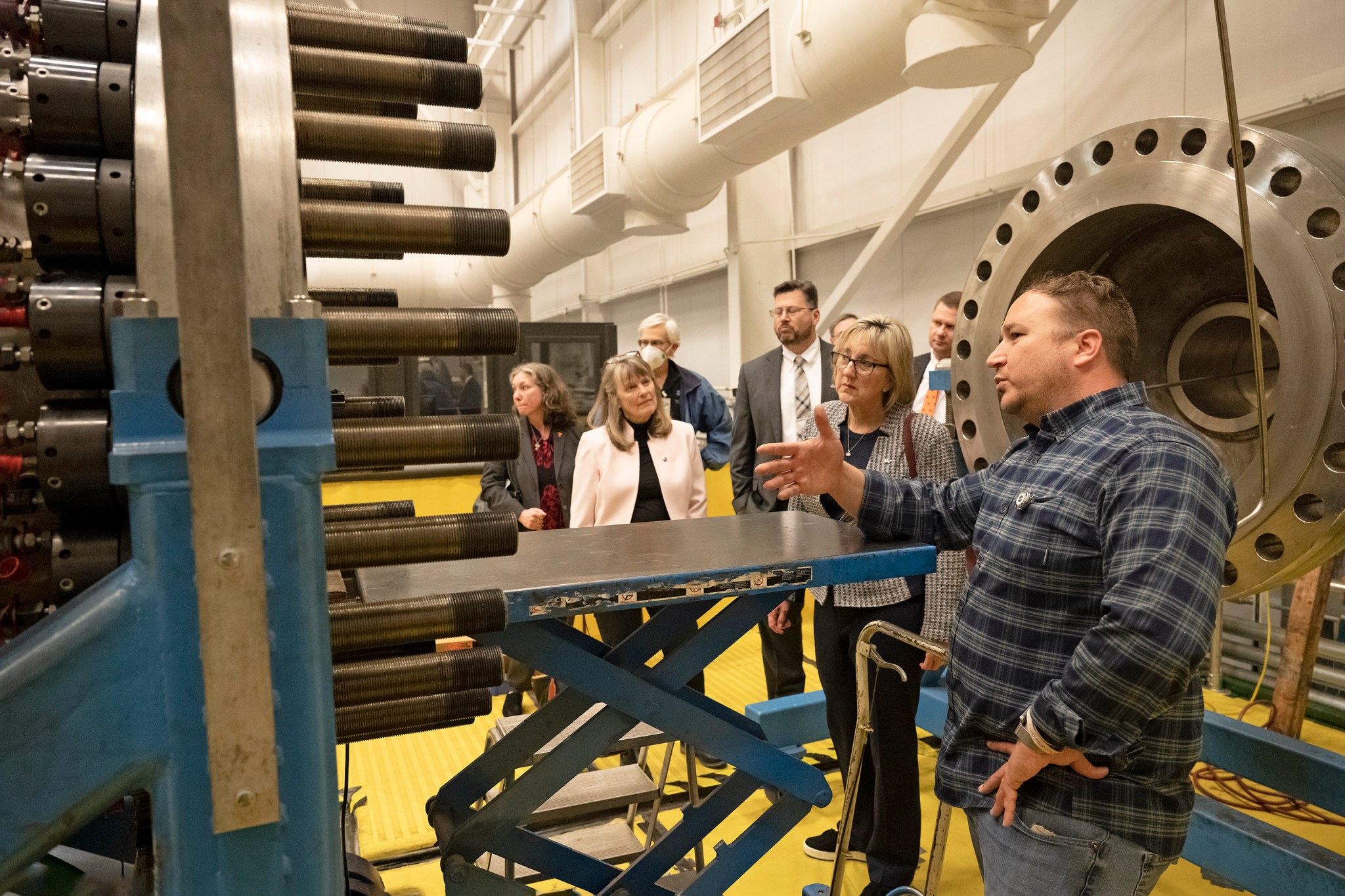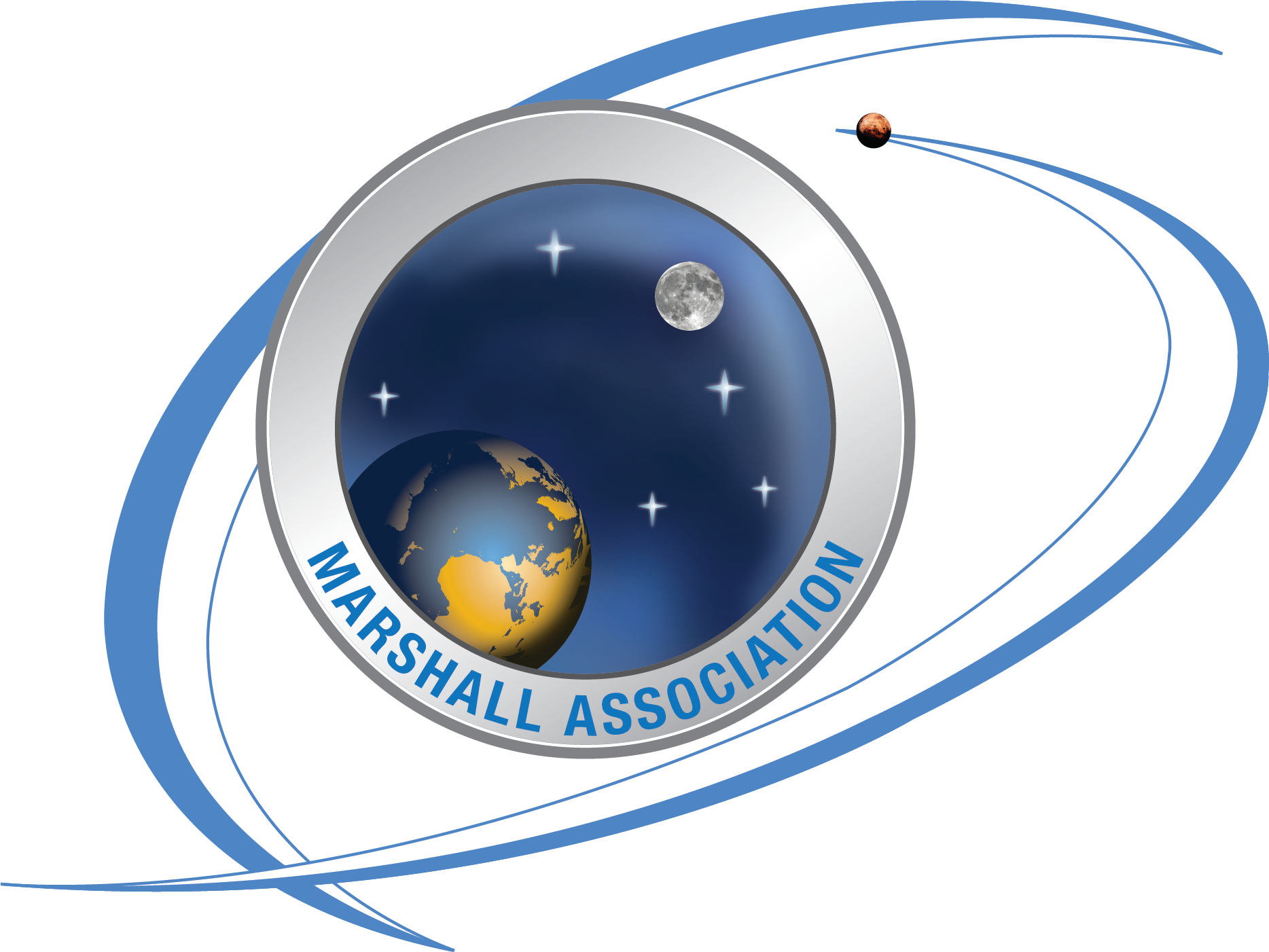I
Marshall, Michoud Honor Outstanding Achievements at Agency Awards Ceremony
James Free, NASA associate administrator for the Exploration Systems Development Mission Directorate, delivers the keynote address during the Marshall Space Flight Center and Michoud Assembly Facility virtual Agency-level Honor Awards ceremony April 12. “The launch of Artemis I will mark a proud and powerful moment in NASA’s and our nation’s history, the cornerstone for human exploration, now and in the future,” Free said. “Marshall also has a vital role in the future of our Artemis missions, as well, with the Human Landing System. That team is making great progress with industry maturing the systems that will land our astronauts on the Moon in the very near future.” Marshall Director Jody Singer also praised the workforce. “Your work and dedication make it possible for Marshall to achieve all the agency’s goals of exploration and discovery,” she said. “You have proven over the past two years how much we can achieve working … from anywhere.” Among the awards presented were 19 Outstanding Leadership Medals, 19 Exceptional Service Medals, 20 Exceptional Achievement Medals, 16 Early Career Achievement Medals, 27 Sliver Achievement Medals, and 36 Group Achievement Medals. See the complete roster of awards and recipients here. (NASA)
Feasting Black Holes Caught in Galactic Spiderweb
Often, a spiderweb conjures the idea of captured prey soon to be consumed by a waiting predator. In the case of the Spiderweb protocluster, however, objects that lie within a giant cosmic web are feasting and growing, according to data from NASA’s Chandra X-ray Observatory.
The Spiderweb galaxy, officially known as J1140-2629, gets its nickname from its web-like appearance in some optical light images. Located about 10.6 billion light-years from Earth, the Spiderweb galaxy is at the center of a protocluster, a growing collection of galaxies and gas that will eventually evolve into a galaxy cluster.
To look for growing black holes in the Spiderweb protocluster a team of researchers observed it for over eight days with Chandra.
Most of the “blobs” in the optical image are galaxies in the protocluster, including 14 that have been detected in the new, deep Chandra image. These X-ray sources reveal the presence of material falling toward supermassive black holes containing hundreds of millions of times more mass than the Sun. The Spiderweb protocluster exists at an epoch in the universe that astronomers refer to as “cosmic noon.” Scientists have found that during this time – about 3 billion years after the big bang – black holes and galaxies were undergoing extreme growth.
The Spiderweb appears to be exceeding the lofty standards of even this active period in the universe. The 14 sources detected by Chandra imply that about 25% of the most massive galaxies contain actively growing black holes. This is between five and 20 times higher than the fraction found for other galaxies of a similar age and with about the same range of masses.
These results suggest that some environmental factors are responsible for the large number of rapidly growing black holes in the Spiderweb protocluster. One cause may be that a high rate of collisions and interactions between galaxies is sweeping gas toward the black holes at the center of each galaxy, providing large amounts of material to consume. Another explanation is that the protocluster still contains large quantities of cold gas that is more easily consumed by a black hole than hot gas – this cold gas would be heated as the protocluster evolves into a galaxy cluster.
A detailed study of Hubble data may provide important clues about the reasons for the large number of rapidly growing black holes in the Spiderweb protocluster. Extending this work to other protoclusters would also require the sharp X-ray vision of Chandra.
A paper describing these results has been accepted for publication in the journal Astronomy and Astrophysics and a preprint is available online. The first author is Paolo Tozzi from the National Institute for Astrophysics in Arcetri, Italy.
NASA’s Marshall Space Flight Center manages the Chandra program. The Smithsonian Astrophysical Observatory’s Chandra X-ray Center controls science operations from Cambridge, Massachusetts, and flight operations from Burlington, Massachusetts.
Marshall Manages NASA Exhibits at Space Symposium
NASA’s Marshall Space Flight Center manages the agency’s exhibit at the Space Foundation’s 37th Space Symposium, held April 4-7 in Colorado Springs, Colorado. The exhibit reflected NASA’s objectives in transportation, habitation, infrastructure, operations, and science. Marshall Associate Director, Technical, Larry Leopard, right, gave a presentation on the center’s capabilities. (NASA/Todd Cannon, Laura Hardin)
Get to Know Marissa Garcia
Marissa Garcia is a combustion devices engineer in the propulsion department at NASA’s Marshall Space Flight Center. She is actively engaged in the manufacturing and testing of combustion chambers for NASA, including the Space Launch System RS-25 engine and the Rapid Analysis and Manufacturing Propulsion Technology (RAMPT) project.
What has been your biggest accomplishment or favorite project of your career?
My favorite project has been leading a hot fire test program for additively manufactured rocket engine components at the 40,000-pound thrust level. I work with both NASA engineers and commercial manufacturing companies to manufacture chambers, injectors, and nozzles. We will be hot fire testing these components in the coming months, which will help advance novel additive manufacturing processes and materials for rocket engine component application.
How did you become interested in working in a STEM field? What advice do you have for girls looking to pursue a career in science, technology, engineering, or math?
I first found my spark for engineering when I visited my engineer dad at work. He showed me an actual Darth Vader helmet displayed in the White Sands Missile Range Museum in New Mexico. The description said that the museum, in collaboration with NASA, had generated some of the spaceship sound effects used in “Star Wars.” My dad had always encouraged me to pursue engineering. In my 8-year-old mind, the Darth Vader helmet was a symbol for STEM, and engineering was my pathway to being “one with the Force.” Now, as an engineer, I enjoy the challenges and diverse projects that the field presents. I get to hone my expertise, and at the same time, learn something new every day from my peers.
For students interested in STEM, my advice is to not be afraid of making mistakes. Do the best you can, do your research, and have fun safely learning along the way. STEM is full of experiments and analysis. Making mistakes while in school will help prevent making larger mistakes later.
What are you looking forward to most about the future at NASA?
I’m looking forward to the continuation and growth of partnerships across NASA, industry, and academia. It is important for NASA, in collaboration with industry partners and academia, to develop and advance technology for the public to utilize. Working at NASA, we are right in the middle of the action. It’s exciting to actively support our partners and to experience all the amazing things happening in the aerospace community.
What is something most people don’t know about you?
I actually know some sign language. My mom was a teacher for deaf and hard-of-hearing students, and she taught me some sign language growing up.
Who inspires you?
My mom inspires me. She really is the strongest, kindest, most faith-filled person I know. She was an elementary school teacher for over 35 years, and I got to witness firsthand the impact she made in her students’ lives. She even taught and mentored the kids of former students! She is my favorite teacher and I, of course, am her favorite student – or maybe tied with my brother. I strive to be an impactful mentor and teacher in the STEM field as my mom was in the education field with her students.
University of Tennessee Space Institute Leadership Tours Marshall
Members of the University of Tennessee Space Institute and Office of the Chancellor tour NASA’s Marshall Space Flight Center on April 5 to learn about the agency’s capabilities in hypersonics. The Space Institute is a graduate education and research institution located adjacent to the U.S. Air Force’s Arnold Engineering Development Complex in Tullahoma. (NASA/Charles Beason)
Michael Schoenfeld, Nuclear Systems Team lead in the Propulsion Technology Development Branch, gives a presentation to tour members. (NASA/Charles Beason)
Marshall Association Accepting Scholarship Applications
The Marshall Association will begin accepting applications for its 2022 college scholarships April 18. The association plans to award up to six scholarships to high school seniors or college freshman or sophomores pursuing, or intending to pursue, degrees in undergraduate studies in both technical and nontechnical fields. Applicants must be a dependent or a sibling of a current Marshall Association member. For eligibility details and application materials, visit here or contact Zenia A. Garcia. Applications are due by May 16. The Marshall Association is a professional employee service organization that includes Marshall civil servants, retirees, and contractors. In addition to the scholarship program, the group provides networking and community-building opportunities for members, and monthly speakers. Annual membership is $30, which supports the scholarship program and other events. Visit here to become a member.
Pair of Gate 9 Lanes Closed For 2 Weeks
Redstone Arsenal closed lanes 2 and 3 at Gate 9 on Rideout Road for two weeks beginning April 11. A truck accidentally damaged concrete near the guard station; new concrete and barriers will be installed. Only one facial recognition lane – lane 4 – will be open during the closure. Team members are encouraged to move to the right when entering Rideout Road. For more information on the arsenal and for current gate updates, visit Team Redstone’s accounts on Twitter, Facebook, and Instagram. (Redstone Rocket)



























